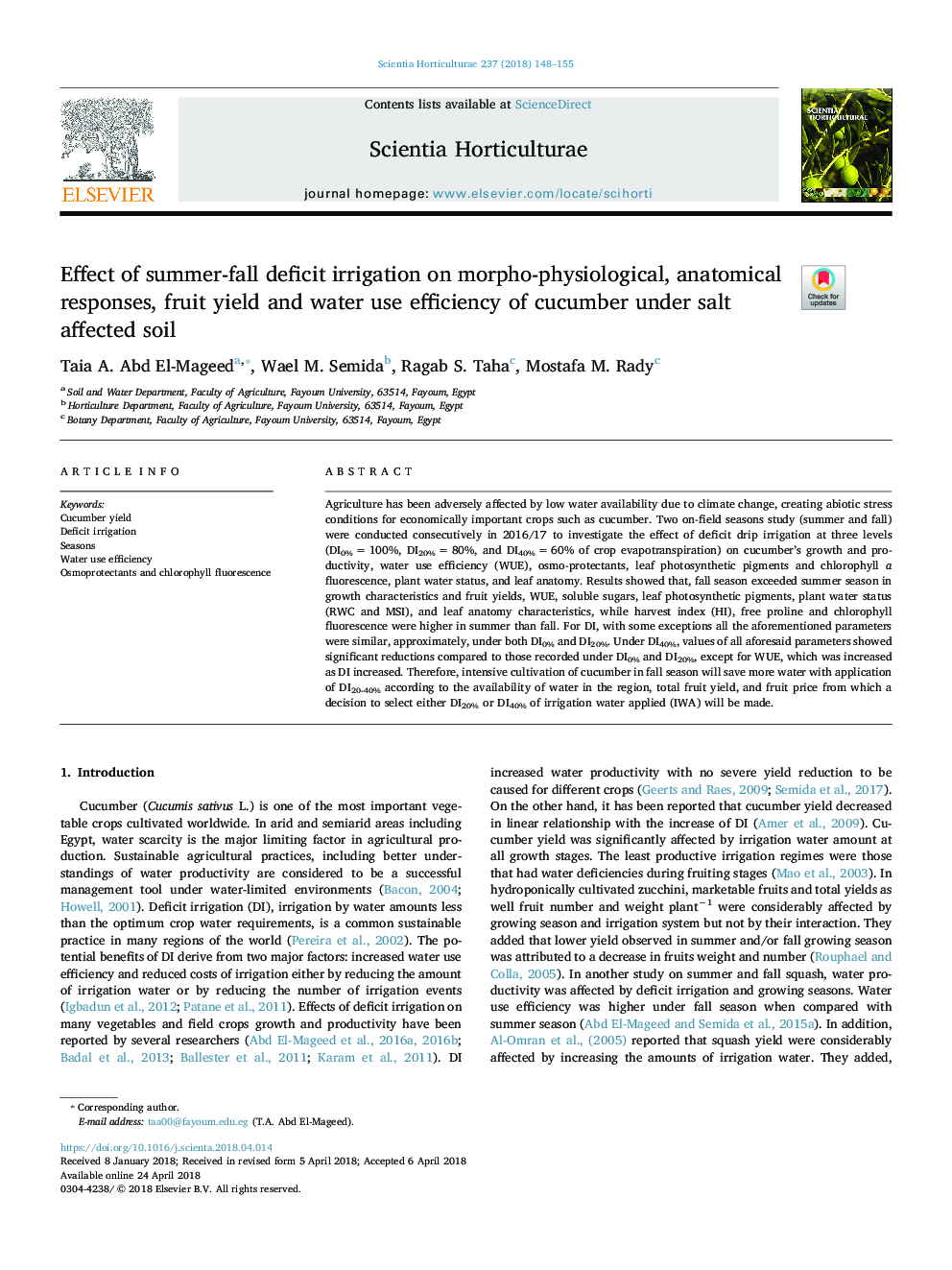| Article ID | Journal | Published Year | Pages | File Type |
|---|---|---|---|---|
| 8892568 | Scientia Horticulturae | 2018 | 8 Pages |
Abstract
Agriculture has been adversely affected by low water availability due to climate change, creating abiotic stress conditions for economically important crops such as cucumber. Two on-field seasons study (summer and fall) were conducted consecutively in 2016/17 to investigate the effect of deficit drip irrigation at three levels (DI0%â¯=â¯100%, DI20%â¯=â¯80%, and DI40%â¯=â¯60% of crop evapotranspiration) on cucumber's growth and productivity, water use efficiency (WUE), osmo-protectants, leaf photosynthetic pigments and chlorophyll a fluorescence, plant water status, and leaf anatomy. Results showed that, fall season exceeded summer season in growth characteristics and fruit yields, WUE, soluble sugars, leaf photosynthetic pigments, plant water status (RWC and MSI), and leaf anatomy characteristics, while harvest index (HI), free proline and chlorophyll fluorescence were higher in summer than fall. For DI, with some exceptions all the aforementioned parameters were similar, approximately, under both DI0% and DI20%. Under DI40%, values of all aforesaid parameters showed significant reductions compared to those recorded under DI0% and DI20%, except for WUE, which was increased as DI increased. Therefore, intensive cultivation of cucumber in fall season will save more water with application of DI20-40% according to the availability of water in the region, total fruit yield, and fruit price from which a decision to select either DI20% or DI40% of irrigation water applied (IWA) will be made.
Related Topics
Life Sciences
Agricultural and Biological Sciences
Horticulture
Authors
Taia A. Abd El-Mageed, Wael M. Semida, Ragab S. Taha, Mostafa M. Rady,
